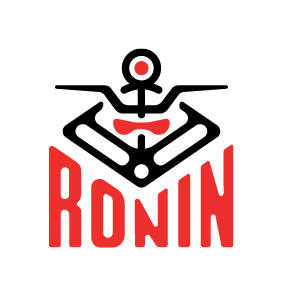Why Cashless Assets (RFID or QR)?
People ask me all the time why they should consider using a Cashless Asset, like RFID or QR codes, as a payment method. There are many things to consider when introducing an alternative payment method into your payment mix such as cost, patron demographics, and the appetite and application by your team for the data it produces.
If you’re considering going cashless, you could switch to Credit Cards only, however, there is a danger of alienating a large part of your patron mix - those who prefer cash. Inherently, it’s the cash-spending folks who are constantly doing the math, making sure they have enough or limiting themselves to a certain amount. Before credit card terminals were prevalent, it was expected that you needed cash to buy anything at an event. However, now that payments have shifted toward cards, it’s becoming increasingly difficult to spend that cash at some events.
Ronin POS has focused a lot of attention to this point. We have refined our Cashless Asset payment process to enable loading cash onto your cashless profile, thereby removing the need to accept cash at all points of sale. The industry term for cash-loading is “Closed Loop”. Cash is now limited to a single booth onsite, rather than having to manage keeping track of it everywhere, or having to supply change banks. In other words, patrons have the choice of using the cash loaded Cashless Asset (RFID or QR) or using their physical credit card at the payment terminals. Along with streamlining the cash spending process to the Asset, the physical credit card tap or dip is seamless and really fast. This has lowered the cash liability on the field, minimized stealing and shrinkage, and subsequently, interaction time at the register is as fast as it can be.
Although we have focused on enabling folks to spend cash more efficiently at festivals, this is not our preferred method of using a Cashless Asset. We find “Open Loop” to be the better option because there is no “balance” to worry about and generally zero customer service issues. Our preferred Open Loop payment method is essentially allowing patrons to “link their credit card” to their wristband or QR code. This allows folks the freedom to spend against their credit card limit, rather than a predetermined amount. Essentially, every time you tap your wristband or scan your QR code on the tablet, it charges your credit card and each is considered a distinct and separate transaction. The psychology around this spending behavior is clear in the data. People spend more. When there is a balance, folks are generally concerned with how much they have left, or if they have enough and if they don’t spend it all, how they’ll get it back. When it’s linked to the credit card, that worry tends to disappear.
Normally, it is the folks who spend cash that adopt the Cashless Asset payment method. That, coupled with the speed and reliability, means that it becomes the most used payment method onsite which typically results in more revenue. On average, the per transaction spend is $2 more than cash. Interestingly, we’ve found that, for whatever reason, patrons spend even more per transaction when using a credit card, averaging $2-$4 over cash and cashless. Therefore, we recommend allowing patrons the payment options of using a cashless asset or pulling out a credit card. Whether it's the psychology of how people spend or the number of options they have to spend, it all plays a role in optimizing the window of time you have to execute and to maximize your revenue-making opportunity.
Want to see how we can help you go cashless?
Talk to a RoninPOS rep to learn more about our system.



